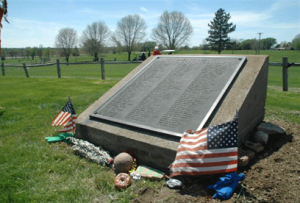Abandoned insane asylums are a topic of morbid curiosity for many people today – ghost tours, trespassing, and fascination with mental illness and pop psychology all invoke Freud’s concept of the “uncanny” – “the appearance of that which is thought to be hidden and would remain so but has been brought to the surface (Jackson, 2016, p. 161). An example is the case of the Hiawatha Asylum for Insane Indians in Canton, South Dakota, which operated from circa 1902 to 1934. The Hiawatha Asylum functioned as tool of cultural imperialism by collecting “rebellious” Native bodies.

The cemetery adjacent to the asylum consists of 121 unmarked graves of Hiawatha patients from 53 different tribes (Duty, 2015). It has been found that many of these patients died because they were denied the care they needed, and that although there is a list of names of the dead (unrelated to grave location), no cause of death or reason for incarceration at the asylum was listed. On the flip side, in 1933, the Bureau of Indian Affairs found that many of the patients at the Asylum were not actually mentally ill, but rather kept at the institution because they refused to assimilate into white Euro-American culture in one form or another, whether that was by singing traditional songs or getting into physical fights with white men (Stawicki, 1997). Furthermore, the asylum was determined by investigators to not be up to standard for an institution treating the mentally ill (keep in mind that these were early 1900s standards, so it had to be awful not to pass minimum standard). Living patients were even “shown” to paying visitors — a true example of objectification.
These factors essentially combined into a “collection” of Native Americans who rebelled against white supremacy – one without context due to unmarked graves and non-existent records of exactly why each individual was institutionalized. It was a collection created without proper protocol and qualifications by the people running the institution. In this way, it was a collection utilized to exert power upon a marginalized group, which relates to the case of the 1914 fire at the Florida Industrial School for Boys, and the issues there related to the lack of documentation of burials and disregard for the health and safety of the boys there.

Also in both cases, the requests of the living are major factors in bringing a voice to the dead people who were objectified as collection items in life. Many descendants of those incarcerated at the Hiawatha Asylum are left with little to no information about why their ancestors were taken away and where they are now buried. One example of strides in repatriation efforts related to the Hiawatha Asylum is a 2015 effort to repatriate an Osage man from the cemetery there by the nation’s Traditional Cultural Advisors Committee (thanks in part to NAGPRA). While it is hard to find direct descendants, the Osage as a nation claim him, requesting to restore a memorial for all Native Americans buried at the site.
Sources:
http://osagenews.org/en/article/2015/10/23/committee-consider-repatriation-osage-man-buried-infamous-hiawatha-asylum-insane-indians-cemetery/
http://www.rootsweb.ancestry.com/~sdlincol/hiawatha.htm
Further Reading:
https://www.usatoday.com/story/news/nation/2013/05/05/sd-native-american-insane-asylum/2137011/
‘A Living Burial’: Inside the Hiawatha Asylum for Insane Indians


